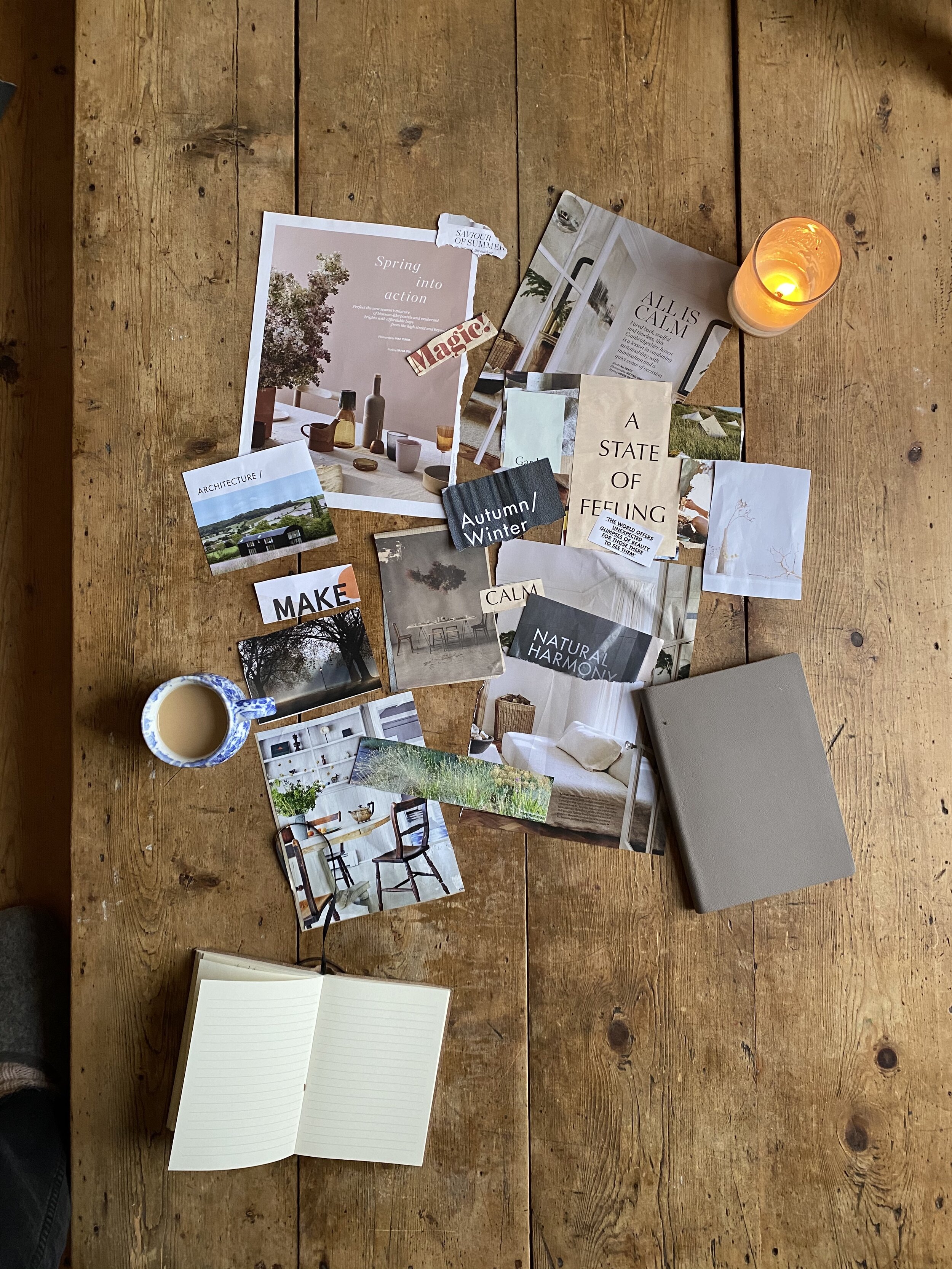How to make a Vision Board
Vision boards act as a physical representation of what we want in life. They can be physical or digital.
They are the focus of the first week of The January Box, along with some other activities designed to help us to feel hopeful about 2021. The cart is now open until Sunday if you’d like to join us. Link here.
The act of making those dreams tangible is powerful in itself; often we are not actually that clear on what we want and spending time thinking about it, and getting specific about some of the details, can be surprisingly life-changing! As a result of this thinking, you’ll probably end up making some decisions now that help you get to where you want to be. Those decisions could be about tiny things like what underwear you’ll wear from now on (no more holey knickers!) or taking longer deeper breaths, or bigger things like making changes to the people you allow to be close to you, or moving house or country (!). Exciting stuff!
Your vision board can be specifically about what you want for the new year, or it can be about what you want from life in general. I often do both. So far, I have done my life in general board, and focussed heavily on feelings. It has been a fully absorbing, distracting and hopeful activity in these utterly unprecedented global times, so this post is to hopefully inspire you to try it. Also- you don’t have to be crafty- anyone can do this.
The power of simply thinking about what we want
Did you know that our brains are hard-wired to focus on the negative and keep things familiar and safe? It’s our brains way of trying to keep us safe and away from danger, an ancient hangover from our early beginnings. Simply knowing this is itself revealing, but coupled with the knowledge that our brains can be ‘re-wired’ due to the neuroplasticity in our brains, then the potential for change is huge. There are studies that show that our brains don’t always know the difference between thinking about doing something and actually doing something. That’s why allowing ourselves to dream about what we want, in detail, is so powerful. Dreaming, thinking about and visualising what we want stimulates the parts of our brain that actually think it’s happening. It helps to bypass our brain’s negativity bias by making the goal feel familiar and therefore safe. It also creates a pathway to action: if this goal feels natural and familiar, our brains are more likely to work with us in getting there, rather than actively resist us. Pretty cool hey. There are limits to the amount of re-wiring, as this article points out, but I find this sort of information fascinating.
So back to vision boards. I have been making them for a few years now, and have shared some tips below.
The key to making a powerful vision board
Have fun. Don’t over analyse it, follow your intuition. Dop’t try this when you feel exhausted. Release your inner child! Cutting and sticking is fun!
Gather a wide array of reference material. If your board is physical, don’t just rely on one publication for your inspiration. Gather newspapers, leaflets and magazines from different genres. Write down important words and phrases if you can’t find them in your material. If you’re making a digital mood board, use a wide verity of image sites, Don’t just rely on Pinterest- the algorithm shows you the same sorts of images repeatedly. Check Instagram and your favourite blogs, shops and online publications too.
Focus on FEELINGS. Rather than gathering pictures of the material items you want (like I used to do with the toy catalogue when I was a kid) first focus on how you want to feel. Gather images that represent those feelings. Then, once you’ve done that, feel free to add in the fun material stuff too. But, feelings first.
Make it visible. Seeing is believing! Once you’ve completed your vision board or collage, place it somewhere you see it daily. Mine lives by my desk. Physical boards are more effective than digital moodboards as they can be placed in your line of vision on a daily basis. If you create a digital mood board (using Pinterest or Canva for example) save the finished image to your laptop and phone screensaver so you see it regularly. And that’s it.


